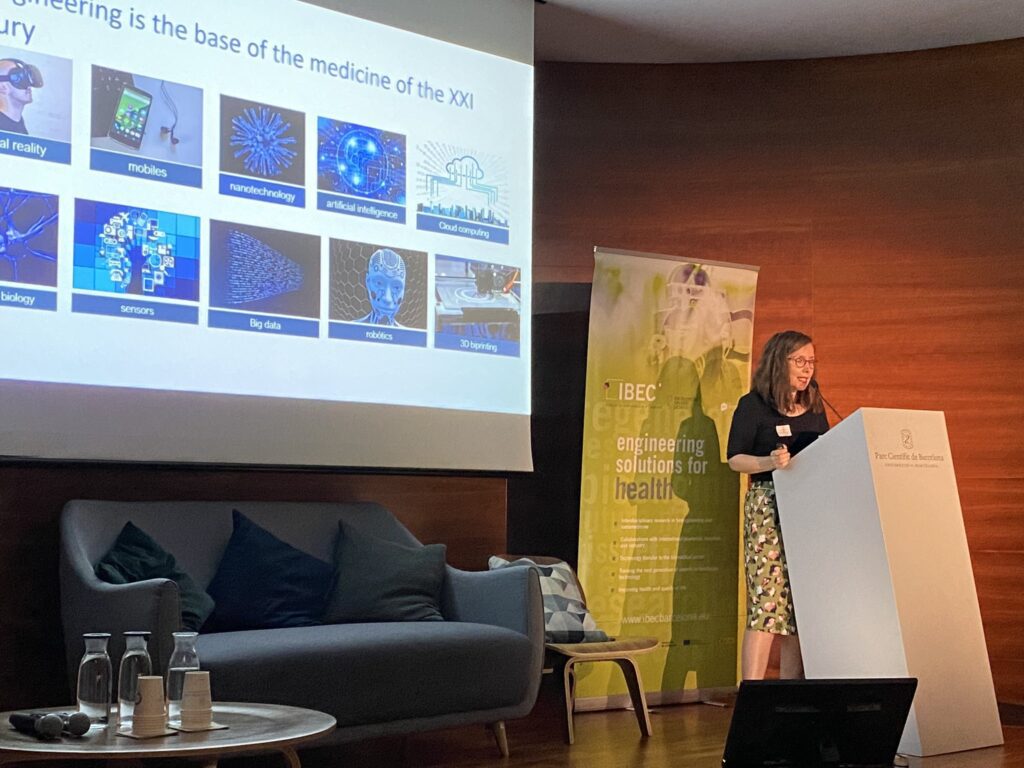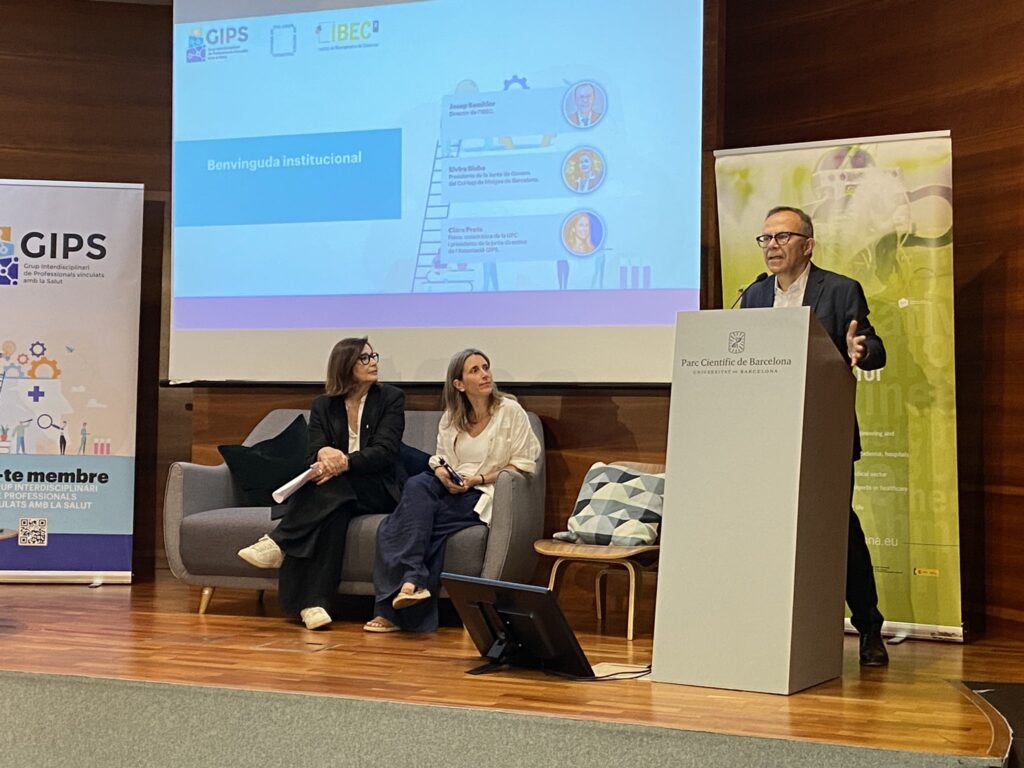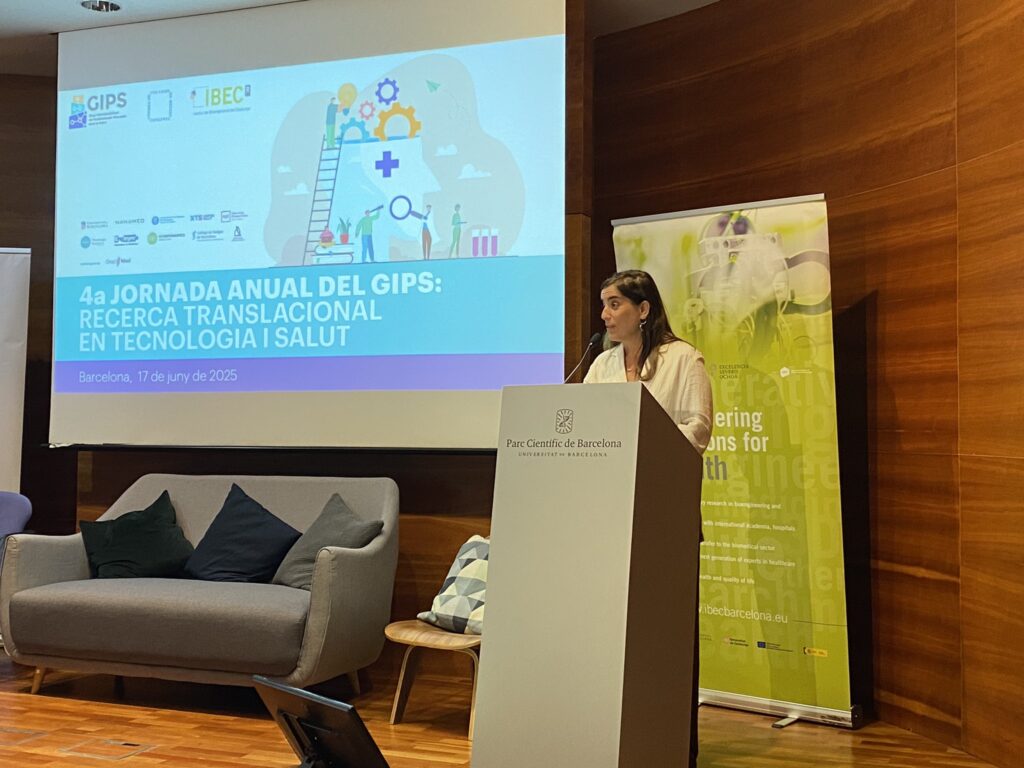Today marked the fourth annual conference of the Interdisciplinary Group of Health Professionals (GIPS), which featured the collaboration of the Institute for Bioengineering of Catalonia (IBEC) this year. The event welcomed over 150 attendees from clinical, academic, institutional, and technological backgrounds, and aimed to strengthen interdisciplinary collaboration and promote innovation in health.
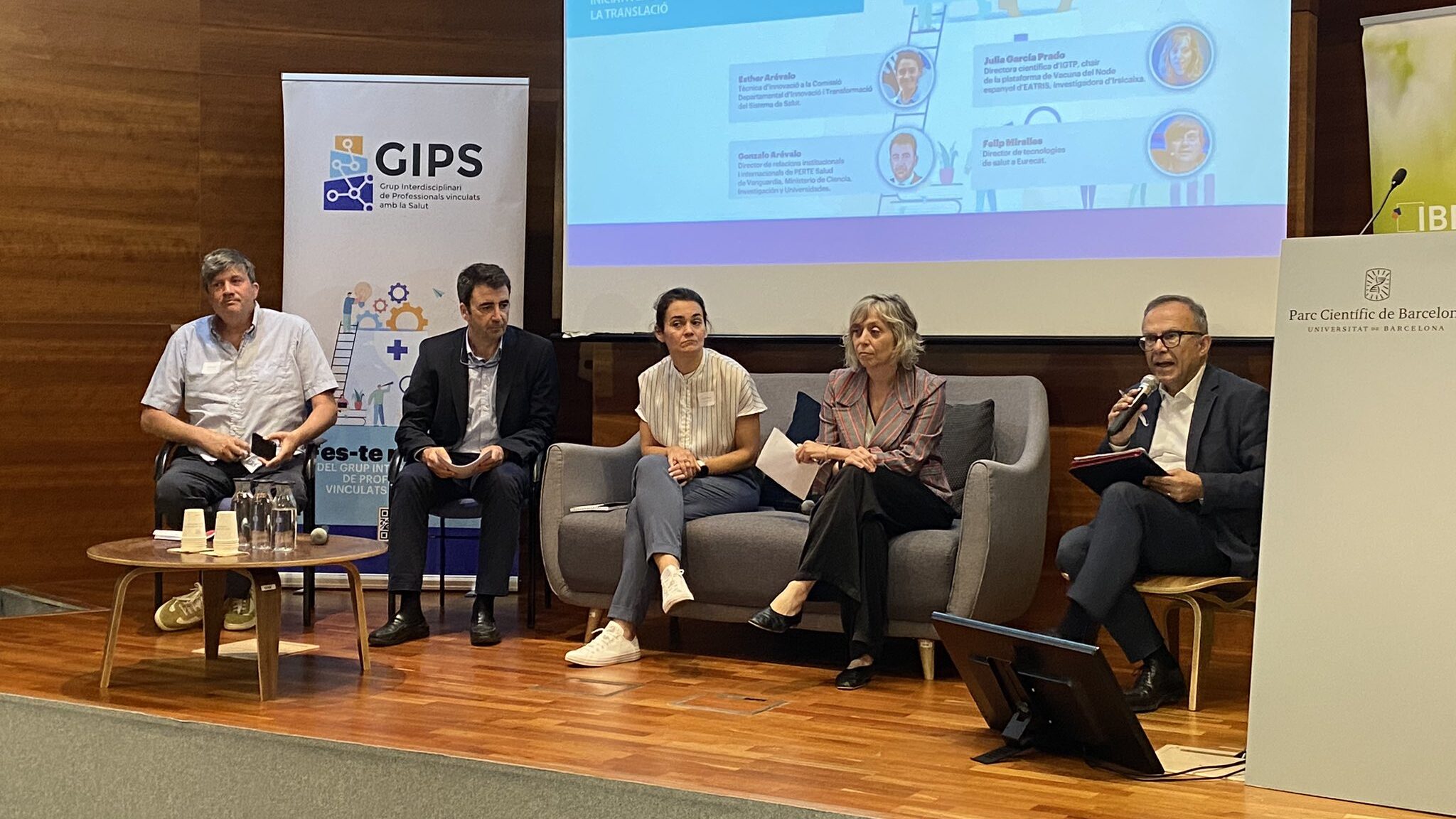
The 4th Annual GIPS Conference, organised in collaboration with IBEC, took place today at the Antoni Caparrós Auditorium of the Barcelona Science Park (PCB). Under the slogan ‘Translational research in technology and health’, the event brought together over 150 professionals from the clinical, academic, institutional, and technological fields in person and virtually to strengthen interdisciplinary collaboration and promote innovation in health.
Josep Samitier, director of IBEC, and Elvira Bisbe, president of the Governing Board of the Barcelona Medical Association (CoMB), opened the conference, emphasising the importance of building bridges between clinical and scientific-technological environments. Clara Prats, president of GIPS, presented the association’s work in this context.
To accelerate the delivery of new technologies and therapeutic approaches to patients, we must embrace an open innovation model, fostering collaboration between researchers, engineers, and healthcare professionals, and cultivating relationships with clinicians and biotechnology companies.
Teresa Sanchis
A notable highlight was the attendance of Núria Montserrat, the Catalan Minister for Research and Universities, who delivered the closing remarks alongside Clara Prats, thereby reinforcing the Catalan government’s dedication to translational research and innovation in health.
During the event, Teresa Sanchis, IBEC’s head of strategy, gave a talk on promoting translational research in bioengineering. She highlighted the key role of research centres in generating knowledge that has a real impact on the healthcare system. “To accelerate the delivery of new technologies and therapeutic approaches to patients, we must embrace an open innovation model, fostering collaboration between researchers, engineers, and healthcare professionals, and cultivating relationships with clinicians and biotechnology companies,” she said.
The conference also demonstrated IBEC’s commitment to the healthcare sector through its collaboration with GIPS, CoMB, and the Catalan government’s Department of Health as well as its established partnerships with organisations such as the Blood and Tissue Bank of Catalonia, the Vall d’Hebron Research Institute (VHIR), and the Sant Joan de Déu Hospital. These collaborations include joint doctoral programmes, applied research projects and educational activities aimed at knowledge transfer.
Success stories presented included the 3DSurgHelp paediatric surgical simulator, the EVBrainTarget platform, the LENTI-UP project, B-ORG personalised liver organoids, virtual reality applications for paediatric vaccinations, and the development of a robotic exoskeleton for rehabilitation. All of these initiatives demonstrate the potential of collaboration between science, engineering and medicine to address real clinical needs.
The round tables addressed how to promote both basic and clinical research, as well as European initiatives to encourage translation. Representatives from institutions such as Parc Taulí, the Catalan Health Institute (ICS), the Polytechnic University of Catalonia (UPC), the Germans Trias i Pujol Research Institute (IGTP), Eurecat and PERTE Salud de Vanguardia were in attendance, offering insights into the challenges and opportunities within the innovative health ecosystem.
Despite advances in analysis and prevention there are still significant challenges in medical translation, such as intersectoral collaboration, interdisciplinarity, and the active participation of patients and citizens in research.
Josep Samitier
In this context, Josep Samitier emphasised the need for Europe to be self-sufficient in the biomedical field — a key lesson learned from the pandemic — and stressed that in order to drive innovation, we must strengthen our own capabilities and avoid becoming dependent on other countries. Despite advances in analysis and prevention, he pointed out that “there are still significant challenges in medical translation, such as intersectoral collaboration, interdisciplinarity, and the active participation of patients and citizens in research.”
For his part, Antoni Plasència, the Director General of Research and Innovation at the Catalan government’s Department of Health, emphasised that the healthcare system is both the starting point and the end goal of research. He focused on patients and the population as the driving force and objective of innovative solutions within a fair and equitable public system. He also highlighted the importance of integrating the private and industrial sectors into this ecosystem, concluding with a reminder of the session’s objective: to share direct experiences with professionals in the sector.
The day concluded with networking activities, the GIPS General Assembly and a guided tour of the PCB laboratories. Support for the initiative came from entities such as the University of Barcelona (UB), NANOMED Spain, the UPC, Xartec Salut, Pompeu Fabra University (UPF), FENIN, the Official Association of Industrial Engineers of Catalonia, Bioinformatics Barcelona, and the Innovation and Entrepreneurship Area of the CoMB.
